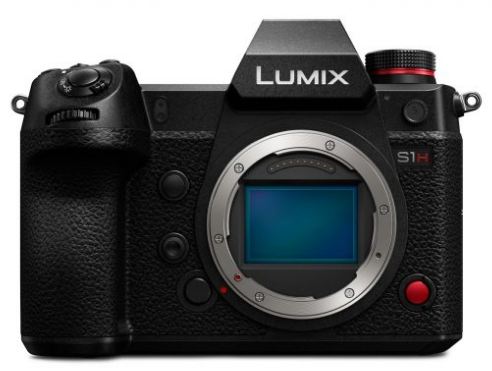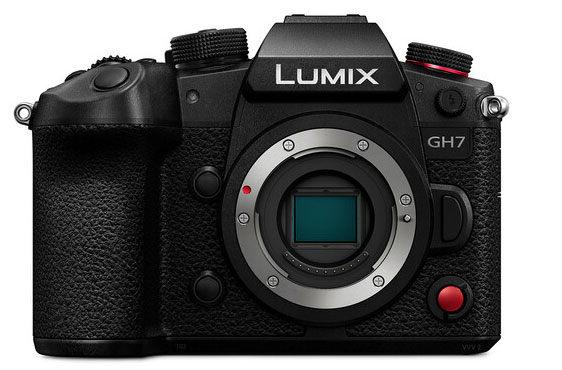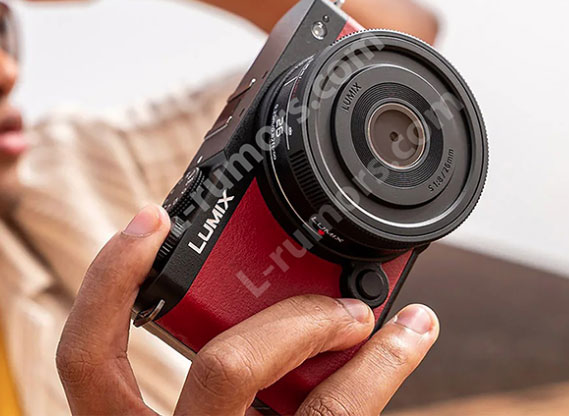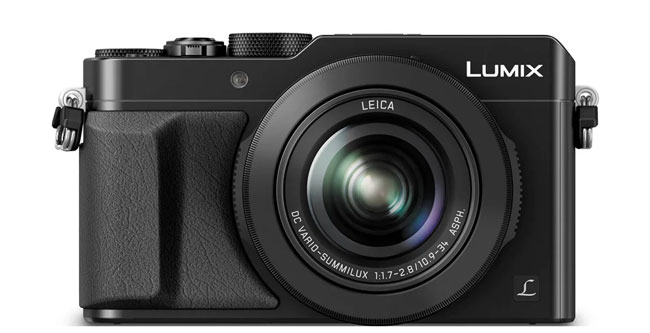Join More Than 50,000+ Subscribers and get latest camera news and rumors
NEW CAMERA VIDEOS ON YOUTUBE
|
By admin, on December 16th, 2024

Panasonic is planning to announce a compact camera in 2025, according to the latest rumors from Webio [take it with a grain of salt]. Panasonic is reportedly planning to announce a compact camera similar to Canon G7X Mark III, specifically designed for content creators. This camera is under development and expected to arrive in the first half of 2025.
When I visited the Panasonic Lumix websites of several countries, I noticed that most of their compact cameras are either out of production or out of stock. Currently, the only compact camera active in their production line is the Lumix FZ80. Even retailers are no longer accepting any orders of Panasonic compact camera models.
It’s hard to believe this rumor, seeing that most of their cameras are out of production. They may either launch a brand-new series specifically for content creators or revive one of their existing models, like the LX20.
It looks like Panasonic is in the mood to regain the compact camera consumer base. And yes, they can do so, as a huge number of content creators right now would love to have a compact solution with high-quality videography features, which the Panasonic /Lumix brand can easily deliver.
We will update you if anything comes up related to the upcoming camera or lenses. Stay tuned and stay updated.
Follow us on our social pages FACEBOOK | TWITTER | INSTAGRAM, to get LIVE News and Panasonic Rumor
By admin, on June 14th, 2024

According to the latest rumors surfaced over the web, after the Pansonic GH7 update now Panasonic will revive the “S” series of full-frame cameras. The Panasonic S1H Mark II is said to be one of the announcement pipelines, expected to arrive in Q4 of 2024. published on June 9, 2024
We have published this post back on June 9, 2024. Now the same information appears on camera-beta (webio). So, either they have their source of just they are copying us I am not able to tell this, but since their post have no mentions or credits to anyone we are considering it as a fresh piece of information that exactly resembles the info we have shared a while ago.
information shared by Camera beta today – June 14, 2024
Panasonic Lumix S1H II may be released in the fourth quarter – According to the latest information, after the release of Panasonic GH7, the next update will be for the S series full-frame camera bodies. According to previous rumors, Lumix S1H II is among them, and it is expected to be officially released within this year (fourth quarter).
Follow us on our social pages FACEBOOK | TWITTER | INSTAGRAM, to get LIVE News and Panasonic Rumor
source camerabeta
By admin, on June 6th, 2024

Panasonic GH7 Press Release
Panasonic is proud to introduce the new LUMIX GH7 – the latest flagship model of the Micro Four Thirds mirrorless LUMIX G Series.
The LUMIX GH7 delivers outstanding video performance, wide dynamic range with a newly developed 25.2MP BSI CMOS sensor and improved AF performance with PDAF (Phase Detection Auto-Focus). To support the efficient workflow required in professional production environments, it is now newly equipped with Apple ProRes RAW*1 internal recording and a World’s first 32-bit float recording*2, which eliminates the need to adjust sound recording levels during shooting.
With the rapid increase in demand for video content in recent years, the number of small teams of video creators is increasing along with the demand for further improvement in the quality of mirrorless cameras with excellent video performance and portability. Since its release in 2009, our LUMIX GH series has developed a strong reputation among creators and video production teams, as a model renowned for its shooting performance, innovative features and reliability.
The LUMIX GH7 is a next-generation mirrorless camera that meets the needs of creators, whatever their creative field may be.
Main Features
- High performance, fast response, and excellent mobility
- 25.2MP BSI CMOS sensor with high resolution and fast response, along with 13+ stop dynamic range boost*3 with rich gradation
- Adopting PDAF for high-speed, high-precision AF performance, and newly added real-time auto-focus recognition AF for airplane and train
- Improved image stabilization technology, including perspective distortion correction for videos and High mode in Active I.S. to enable powerful compensation when shooting on the move
- Enhanced video quality and optimized workflows from shooting to post-production
- Internal recording of 5.7K 30p ProRes 422 HQ and ProRes RAW HQ*1.
- World’s first 32-bit float recording*2, eliminating the need to adjust audio recording levels during shooting when using the new XLR microphone adaptr, DMW-XLR2 (sold separately).
- Allows users to load original LUT files and apply new color looks directly to videos and photos with REAL TIME LUT.
- Enables proxy recording for workflow efficiency and supports native Camera to Cloud integration with Adobe’s Frame.io enabling images and videos to be automatically uploaded, backed up, shared, and worked on jointly via the cloud.
- Open Gate recording to enable flexible framing for any social media platform or client needs.
- Reliable in the video production field
- Unlimited video recording made possible with efficient heat dissipation processing and the integration of a cooling fan*4.
- Convenient tilt-free angle monitor that does not interfere with HDMI or USB cables when tilted
- Able to withstand harsh environments with dust, splash resistance*5, and freeze-resistance down to -10 degrees Celsius/14 degrees Fahrenheit.
By admin, on May 20th, 2024

According to the latest rumors we have the Panasonic Lumix S9 Mirrorless camera will be announced on May 22, 2024, the price of the camera is said to be $1499 along with the kit lens, take a look at the set of leaked specifications of the upcoming camera
The Panasonic S9 Core specification
- It features a lightweight body that leans towards video production.
- The compact body does not have an EVF and is smaller than the Fuji X100 VI.
- Equipped with the same 24 million pixel sensor as the Panasonic Lumix S5 II.
- 779-Point Phase-Detection AF System
- 6K30p 4:2:0 10-Bit Video Recording
- C4K/4K60p 4:2:2 10-Bit
- The body comes with a dedicated LUT button and allows for uploading custom LUTs.
- It has in-body image stabilization.
- Features a flip touch screen.
- There is no mechanical shutter.
- The camera is available in various colors such as black, green, blue, and red.
- Priced $1499
I believe that in the future, Panasonic will continue to release more compact and lightweight lenses suitable for this entry-level full-frame mirrorless camera.
Follow us on our social pages FACEBOOK | TWITTER | INSTAGRAM, to get LIVE News and Panasonic Rumor
source L rumor
By admin, on May 13th, 2024

According to the latest rumors surfaced over the web, the new Panasonic camera has been confirmed as the LUMIX S9. It will be released on May 22/23 (depending on the local time difference). This entry-level, interchangeable lens full-frame camera focuses on video capabilities. It has a dedicated LUT button that allows users to switch between different LUT filter effects (similar to the film simulation switch knob on the Fuji XT50) and supports custom LUTs. It is equipped with the same 24 million pixel CMOS sensor as the Panasonic S5 II / S5 IIX, does not have an electronic viewfinder, is smaller than the Fuji X100VI camera, and comes in four different body colors.
stay tuned more updates coming
Follow us on our social pages FACEBOOK | TWITTER | INSTAGRAM, to get LIVE News and Panasonic Rumor
source – webio
By admin, on May 8th, 2024
 According to the latest rumors we have, the upcoming entry-level full-frame MIRRORLESS camera from Lumix COMING SOON will have the same 24.2 MP Hybrid CMOS AF sensor as we have seen in the Panasonic Lumix SS5 and S5 IIX cameras. According to the latest rumors we have, the upcoming entry-level full-frame MIRRORLESS camera from Lumix COMING SOON will have the same 24.2 MP Hybrid CMOS AF sensor as we have seen in the Panasonic Lumix SS5 and S5 IIX cameras.
Don’t get confused, according to the source this Entry level full-frame Mirrorless camera is aimed at content creators, and it’s different from the Fullframe compact camera arriving with a fixed 40mm lens, take a look at what he said
Panasonic’s new entry-level full-frame mirrorless camera will be released in May! The new camera focuses on video capabilities, without a viewfinder, with a flip-out rear screen, making it more compact and affordable. As for the sensor, there are speculations that it might be the same as the Lumix S5 II, but this model is not the previously rumored full-frame camera with a fixed lens design
Interestingly, two Cameras from Pansonic are coming Soon. it’s hard to believe that Panasonic has two new cameras with FF sensors coming soon, yes we do have information in the past that the compact camera will have an FF sensor but one more Entry Level Mirrorless is also coming, this particular news makes me very excited
Follow us on our social pages FACEBOOK | TWITTER | INSTAGRAM, to get LIVE News and Panasonic Rumor
source – webio
By admin, on May 7th, 2024

According to the latest rumors surfaced over the web, Panasonic LUMIX’s will soon announce a new fullframe camera with a fixed 40mm F2 lens (Leica Lens). Leica will announce the same camera as Leica DLUX 8, later on.
What other Media Sources report , Panasonic’s new entry-level full-frame camera is confirmed to be released in May. This camera focuses on video functionality, does not have an electronic viewfinder, is compact and portable, has a flip screen, and is priced affordably. It is not the previously rumored fixed-lens full-frame camera.
Canon R5 Mark II and Fuj X-T50 Next announcement
For those who are not interested in Panasonic, you can wait for Canon R52 on the 15th, XT50 and GFX100S II on the 16th. The specific release date for Sony ZVE10 II is yet to be determined. Nikon D850 being discontinued overseas means it is out of production.
Follow us on our social pages FACEBOOK | TWITTER | INSTAGRAM, to get LIVE News and Panasonic Rumor
source – webio
|
KEEP THIS BLOG ALIVE - Support New Camera Buy Canon Lenses, Buy Music CD or Digital Camera at amazon it helps this site, and you do not pay anything extra, it is just a way to help support this site.

|






 According to the latest rumors we have, the upcoming entry-level full-frame MIRRORLESS camera from Lumix COMING SOON will have the same 24.2 MP Hybrid CMOS AF sensor as we have seen in the Panasonic Lumix SS5 and S5 IIX cameras.
According to the latest rumors we have, the upcoming entry-level full-frame MIRRORLESS camera from Lumix COMING SOON will have the same 24.2 MP Hybrid CMOS AF sensor as we have seen in the Panasonic Lumix SS5 and S5 IIX cameras.




